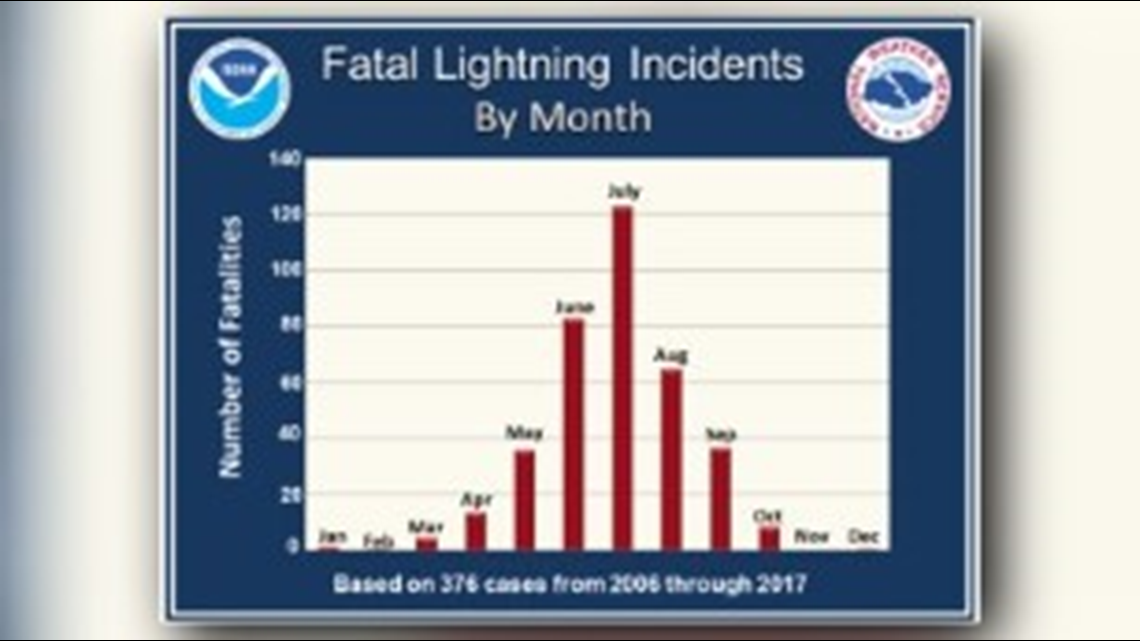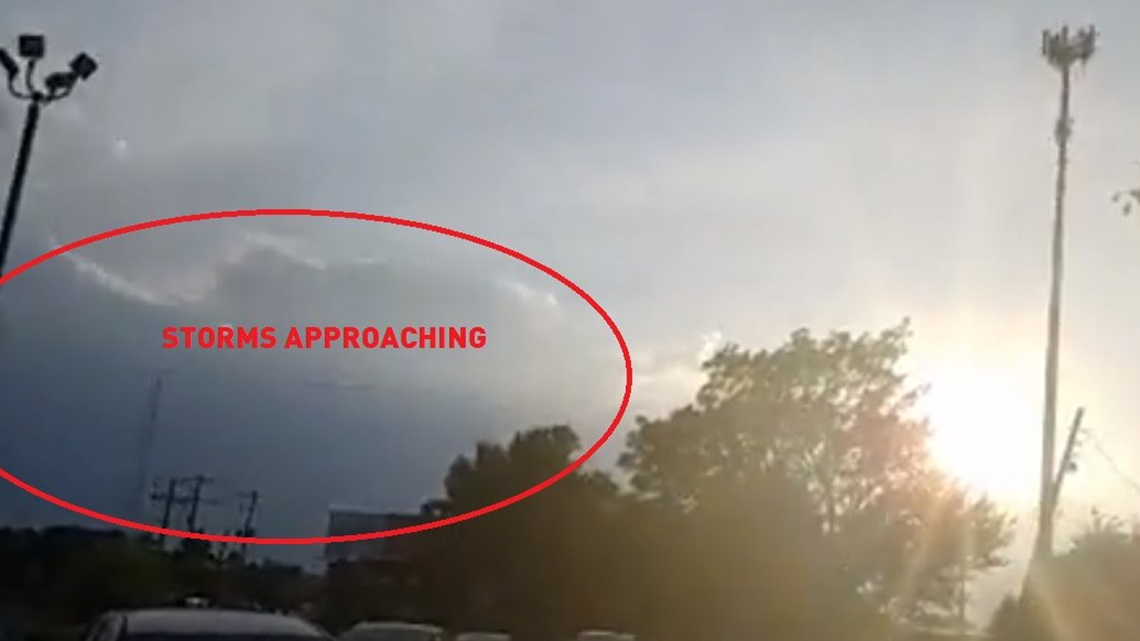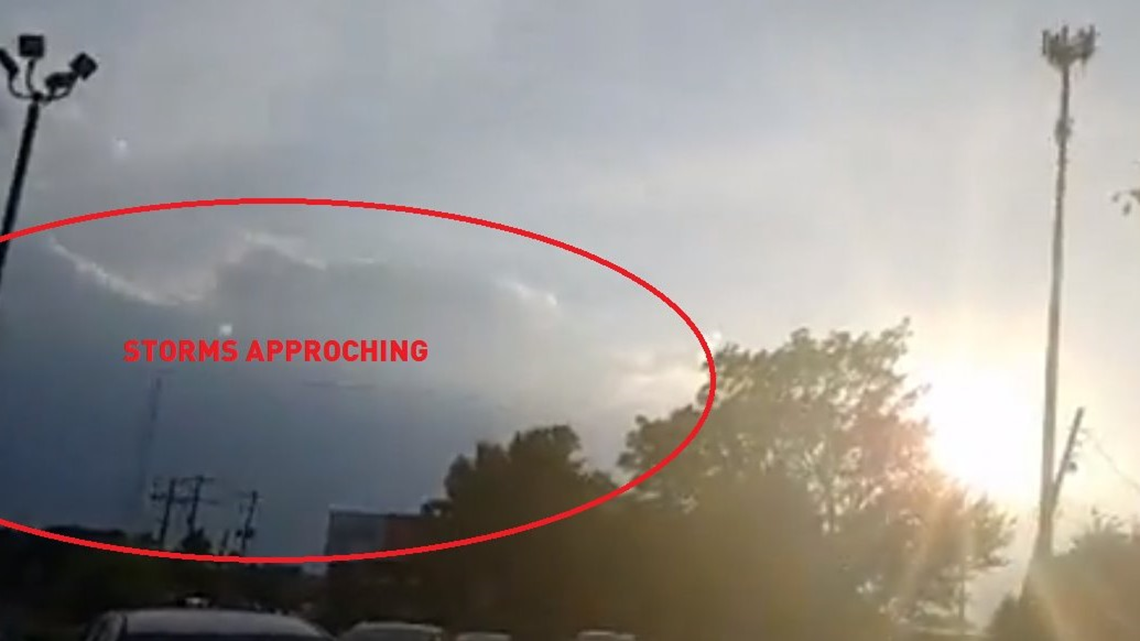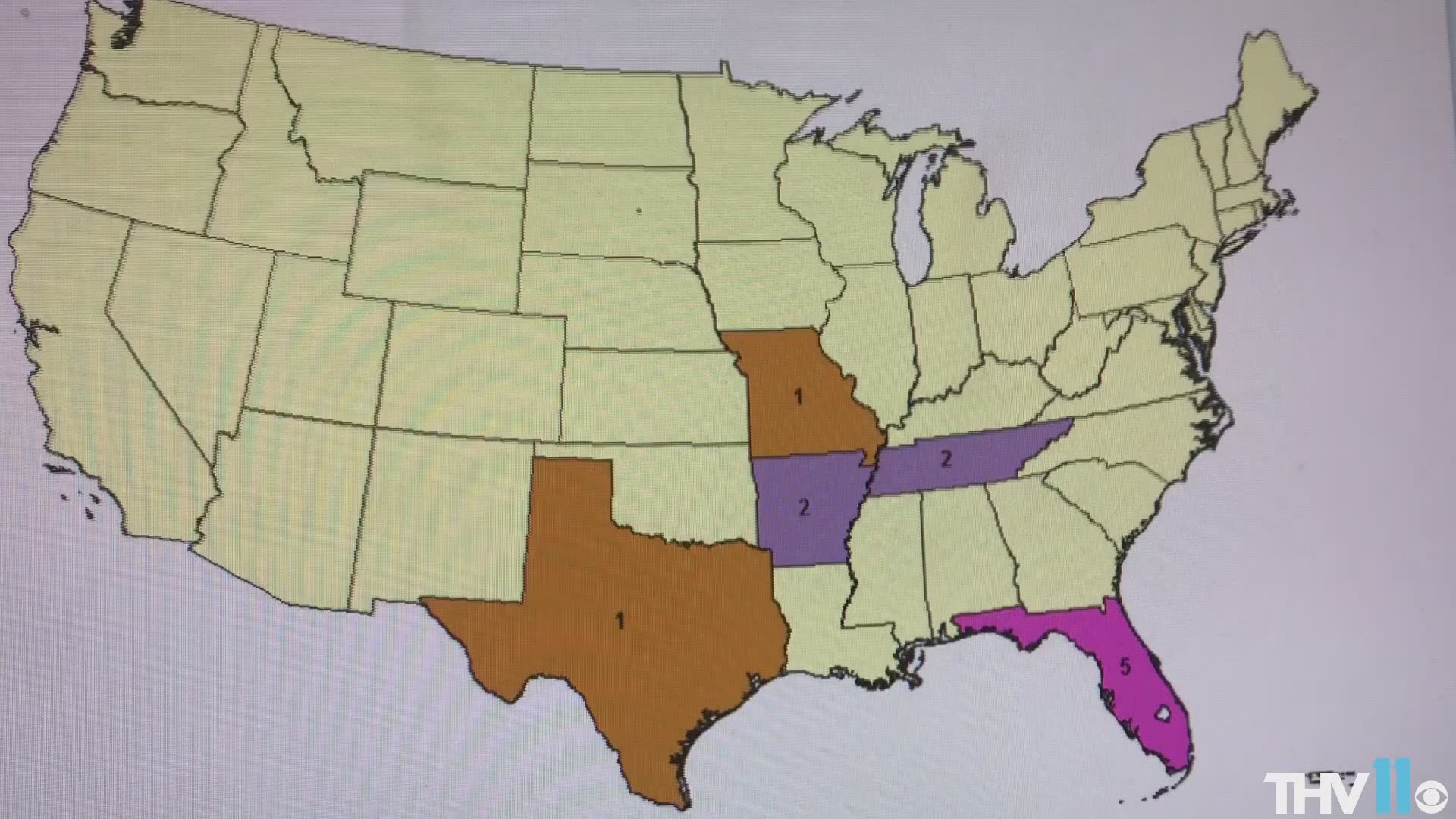Lightning is a force of nature that does not need to be feared, but respected. A bolt of lightning is only an inch in diameter but it is five times hotter than the surface of the sun at 50,000 degrees Fahrenheit.
When thunder roars, go indoors. This is the slogan the National Weather Service adopted as a way to promote lightning safety. If you can hear thunder, you are close enough to be struck by lightning. Any storm can produce a fatal lightning strike. In 2018, there have been ten reported deaths and two of those have happened in Arkansas. The last time Arkansas saw more than 2 lightning deaths was in 1997.
According to the National Oceanic Atmospheric Administration in the summer months of June, July and August and the deadliest months for lightning. This is due to storms are more numerous and more people are outdoors when the weather turns ugly.


Research from a lightning specialist with the National Weather Service highlighted key points on how people become lightning victims.
One reason is victims waited too long to go to a place of safety. By the time they realized how close the danger was to them it was already too late. Another reason is some people are stubborn. They thought the lightning was not “close enough” to get struck. They gambled by trying to get work done, the lawn mowed, continued to play or enjoy their activity, or stayed outdoors when it was not safe. The last reason is the victims did not know a storm was coming. When hiking or on the lake, always stay vigilant to changing the weather, especially if storms are in the forecast. If the breeze picks up or the clouds increase that could be a sign that a storm is approaching or developing. Make sure to check the THV11 weather app when you see the clouds bubbling up or the skies becoming dark.
If you see clouds like, the picture below, headed in your direction that is a clear warning that the weather is about to get nasty. The sun is out but in the distance, clouds are towering across the horizon. This is from June 27 when a line of fast-moving storms barreled through the region with a frequent lightning 45 minutes later.


The best way to keep you and your family safe is to head indoors as soon as you hear thunder. Or see lightning. Once inside stay away from windows, don’t take a shower, or wash the dishes.
No place outside is safe in thunderstorms. If you are not near a building, an enclosed, metal-topped vehicle with the windows up is considered a safe shelter. An open pavilion or gazebo is not a safe place because it is not enclosed and protected from a lightning strike.
The National Weather Service recommends that you stay in your safe place for thirty minutes after the last sound of thunder. Every time you hear thunder start the clock again.
If you are caught outside with no way to shelter, immediately get off elevated areas like hills, get out and away from water. Try to stay away from conductors like metal fences, power lines, and windmills. Never shelter under trees or cliffs and rocky overhangs. Refer to the diagram below for more information from NOAA when hiking in the wilderness.


While lightning is not at the top of the list for what is considered “scariest” in a storm, it is the second leading cause of storm-related deaths in the United States after flooding.
Here are a few lightning myths and facts:
Myth: You can’t get struck by lightning if it is not raining overhead.
Fact: You CAN get struck by lightning if a storm is nearby. Lightning is known to strike more than three miles away from the center of the storm. “Bolts from the blue” can strike 15 miles away from a storm and are quite common in the summer months. This is when lightning strikes from an anvil of the parent storm. Also, if a storm is developing right over your location lightning could come with no warning.
Myth: Cars are safe from lightning because of the rubber tires.
Fact: Cars are safe because of the metal roof and sides. This means convertibles, motorcycles, four wheelers or any transportation method without a roof will not provide adequate protection.
Myth: Lightning never strikes the same place twice.
Fact: Lightning can strike one place multiple times. There is a reason lightning struck there in the first place, that area is likely a good conductor. There are buildings that are known to be lightning favorites. One example is the Empire State Building which gets hit over 20 times a year on average.
The final topic is there is no such thing as heat lightning. You see lightning and not hear thunder because the storm is too far away for the thunder to be heard.
Next time you think you see “heat lightning” look at the radar and you can find where the source of the lightning is coming from. The storm could be 50 to 75 miles away.

